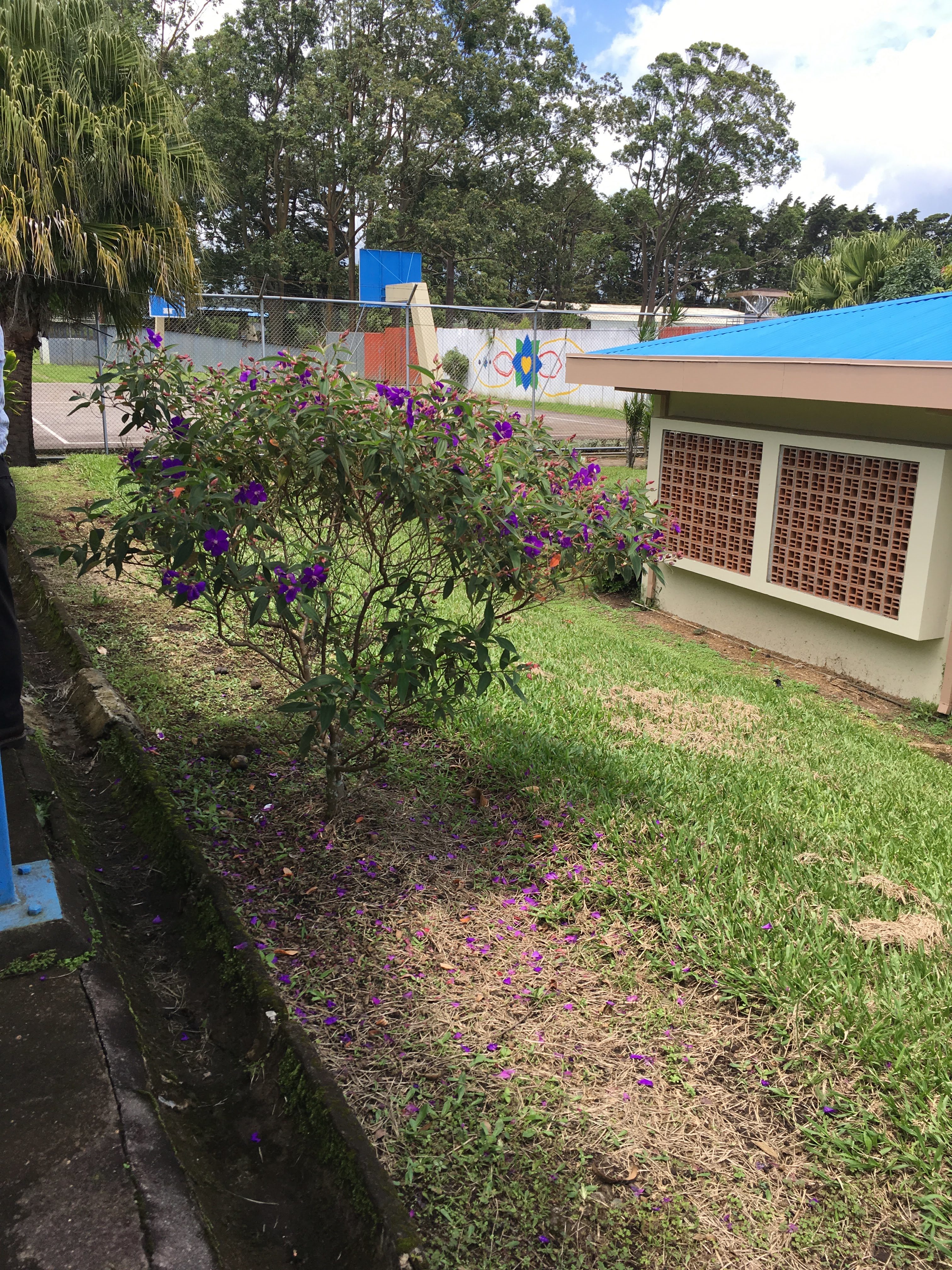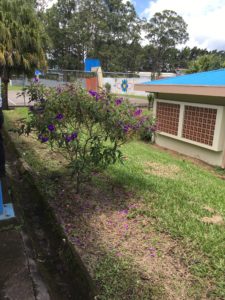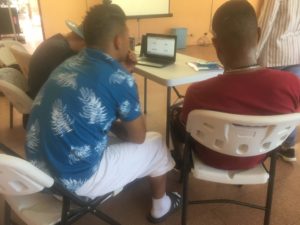
Reflections on Incarceration: Costa Rica Part 3
This is part three of a multi-part series written by Landforce Executive Director Ilyssa Manspeizer about her reverse exchange with Costa Rican nonprofit Nueva Oportunidad. Be on the lookout for more blog posts about the trip coming soon.
“When I get home,” I joked, “everyone will ask me what I did in Costa Rica, and I’ll say – I was in prison.” Except it’s no joke. 4 out of 5 days between July 15th and 19th, I was in prison. Three different prisons – a youth detention center, a men’s prison, and a women’s prison. Each was different from the other, but similar in some ways. They all consist of single-story cement buildings, grouped together in a compound enclosed by tall fences, barbed wire, and guards. In each of these compounds, you will find sections with shrub and flower-lined paths connecting the buildings. (I only visited cells in the youth prison, so do not know if the shrubs and flowers extend to the cells in the other prisons, or are restricted to the administrative sections only.) Yet, this is in stark contrast to my experience visiting the Allegheny County Jail – the only US prison I have visited – where contact with nature, or even a natural breeze, is impossible because of the building’s internal-facing design. I recognize that we have a certain seasonality to contend with that Costa Rica does not, but knowing all we know about the connection between nature and physical and mental health, this does seem to be a lesson we could take from Costa Rica’s prisons.

Flowering shrubs outside of the youth prison.
This is not to romanticize the Costa Rican prison system, for as one person in the men’s jail shared, “In jail, there’s a lot of pressure. People want to kill you. There are no friends.” He said this during the last class of a 6-month training he was doing with Nueva Oportunidad that covered soft skills and conflict management while providing micro-enterprise training. His reason for sharing this was so that he could contrast it with his experience in the training – a place where he felt, for the first time since his incarceration, “Peace and love. And friends.” The Nueva Oportunidad classroom and instructors made them feel, for the first time since their incarceration, safe, like a family.
Nueva Oportunidad recruits participants to the program who have a business idea they want to develop after they are released, or work on during their last stretch of incarceration. They can even help people get access to micro-enterprise grants through the Ministry of “Poverty,” but their real strength is in their curriculum, where hard skills and soft skills are woven together. The curriculum for men, women and youth is pretty similar and is taught by the Nueva Oportunidad team in conjunction with a host of knowledgeable and experienced volunteers. The curriculum includes: business planning, adding value to businesses, managing finances (personal and business), managing conflict, building autonomy, budgeting, building a market, empathic communication, cashflow vs. budget, and Costa Rican labor laws. The women’s curriculum also covers sex and gender and empowerment, so their conversation can range widely, within moments covering ideas to prevent overstocking merchandise to menopause and the female condom. Regardless, everyone who attended the final evaluation sessions that I sat in on, seemed to be deeply touched by the 6 months they spent with Nueva Oportunidad. As one person reported, “I have done other trainings in prisons, but none of them comes close to this. I didn’t expect it, but now I feel like I can move forward.”
 My last day with the Nueva Oportunidad team, I returned, for the third time to the youth detention center where I was greeted warmly by the youth with the typical Costa Rican kiss on the cheek. (During my first trip to the jail, seeing the social workers and the guards kissing each other hello as they entered the cells had certainly confused my U.S. sensibilities.) We were there to join the Nueva Oportunidad youth for a delicious lunch they had spent the morning preparing. Salad heaped high, rice with vegetables, breaded fish, ice cream, and a refreshing minted lemonade. The chef who tutored them was a Nueva Oportunidad volunteer. It was the best meal I had in Costa Rica, made with love and pride by a group of people learning new skills.
My last day with the Nueva Oportunidad team, I returned, for the third time to the youth detention center where I was greeted warmly by the youth with the typical Costa Rican kiss on the cheek. (During my first trip to the jail, seeing the social workers and the guards kissing each other hello as they entered the cells had certainly confused my U.S. sensibilities.) We were there to join the Nueva Oportunidad youth for a delicious lunch they had spent the morning preparing. Salad heaped high, rice with vegetables, breaded fish, ice cream, and a refreshing minted lemonade. The chef who tutored them was a Nueva Oportunidad volunteer. It was the best meal I had in Costa Rica, made with love and pride by a group of people learning new skills.
 I heard two Coca-Cola references during my time in prison – one during a recap lesson about marketing, where someone mentioned that in its marketing campaigns, Coca-Cola doesn’t sell soda, it sells joy. The other was during my first official meeting with Lauren Díaz Arias’ team at Nueva Oportunidad, Lauren said to us all, “You never see a prison population in a Coca-Cola commercial.” She meant that prisons are not where we turn for feel-good inspiration and a sense of common humanity and joy. Well, I think Coca-Cola might be surprised to find that that is exactly what they would find during a Nueva Oportunidad class for people who are in prison in Costa Rica. They will find a reborn hope, an unwavering faith that the future will bring better things than the past, and joy at the prospects. What could be more exhilarating than that?
I heard two Coca-Cola references during my time in prison – one during a recap lesson about marketing, where someone mentioned that in its marketing campaigns, Coca-Cola doesn’t sell soda, it sells joy. The other was during my first official meeting with Lauren Díaz Arias’ team at Nueva Oportunidad, Lauren said to us all, “You never see a prison population in a Coca-Cola commercial.” She meant that prisons are not where we turn for feel-good inspiration and a sense of common humanity and joy. Well, I think Coca-Cola might be surprised to find that that is exactly what they would find during a Nueva Oportunidad class for people who are in prison in Costa Rica. They will find a reborn hope, an unwavering faith that the future will bring better things than the past, and joy at the prospects. What could be more exhilarating than that?
Funding for the reverse exchange program has been provided by the U.S. Department of State’s Bureau of Educational and Cultural Affairs via Meridian International Center as the implementing partner.


